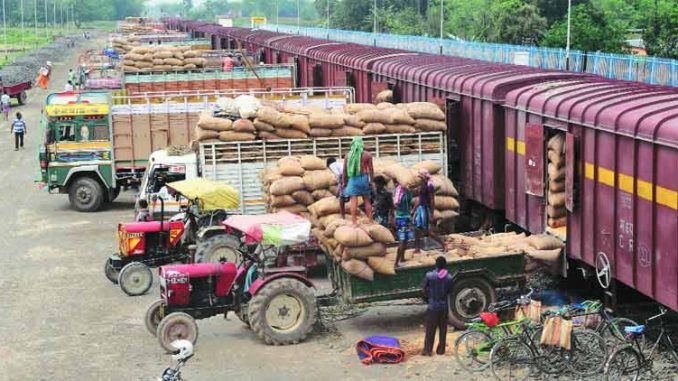Ministry of Commerce and Industry has decided to invest Rs. 1500 crore to develop 40 export cluster houses under the new agricultural export policy which has been finalized and reviewed by the ministry. Under the new policy government seeks to curb imports to reduce country’s widening current account deficit and take exports to 60 billion dollars by 2022. This investment is another step to meet PM Modi’s promise of doubling farmers income by 2022. “The effort will be to focus on developing export-oriented infrastructure in the identified cluster areas, wherein integrated post-harvest processing facilities and laboratories will be set up. The scheme will be implemented in partnership with private exporters, who will have natural incentive to promote such clusters,” said an official.
Under the new agricultural export policy, government’s main focus will be to provide post-harvest infrastructure in clusters, capacity building, laboratories, new technology or machinery introduction to boost exports. Special Economic Zones (SEZs) will be set up for specific countries to produce agricultural commodities which these countries import regularly. The concept of special SEZs for countries is taken from New Industrial Policy which also aims to do the same for industrial goods. “The interest of some countries (having substantial gap in domestic availability of grains, vegetables and fruits) can be explored for bringing in foreign direct investment (FDI) into agriculture export SEZ in order to ensure food security of that country. There can be complete buyback arrangements by the countries, which are bringing in FDI, thus providing a stable market for Indian exports,” said the draft policy.
The 10 agricultural commodities which are selected for market intervention includes shrimps, meat, basmati rice, bananas, and pomegranate, besides vegetables including potato, plant parts/medicinal herbs in value-added forms, including herbal medicines, nutraceuticals, aromatics, spices (cumin, turmeric, pepper) and organic food. Country’s agriculture sector seems to be reviving after a glut in the initial years of the Modi government. In the last quarter of the fiscal year 2017-18, growth in the sector was 4.5 percent. This shows a healthy revival in agriculture with the Rabi season being productive for farmers. In the other quarters of the current fiscal, growth was at 3 percent, 2.6 percent, 3.1 percent for Q1, Q2, and Q3 respectively. The agricultural trade surplus (exports minus imports) has improved in 2017-18 and the first quarter of the current fiscal too. In the FY 2018, the country exported agricultural commodities worth $ 38.74 billion, as against imports of $ 24.89 billion which resulted in farm trade surplus of $ 13.85 billion. The surplus for 2016-17 and 2015-16 was $ 8.05 billion and $ 10.23 billion respectively.
Agricultural exports of India are led by marine products ($7.3 billion), meat ($4 billion) and rice ($4.1 billion). India became the largest exporter of buffalo meat in the world, from being practically nowhere a decade back. The export in buffalo meat was a mere $ 341.43 million in 2003-04, but it peaked to $ 4.78 billion in the first year of the Modi government. The second product is guar-gum, which is used by American shale oil drilling firms such as Halliburton, Baker Hughes, and Schlumberger. They began stockpiling guar-gum, and Indian exporters and farmers too made a killing. The third product was raw cotton. In 2003-04, India’s cotton imports, at $ 341.67 million, exceeded its exports of $ 205.08 million. But in 2011-12, the value of exports ($ 4.33 billion) far surpassed that of imports ($ 223.18 million). India’s share of global agricultural exports rose from 1 percent a decade back to 2.2 percent in 2016. The new agricultural exports policy will help the country to capture larger share of global marketplace.
